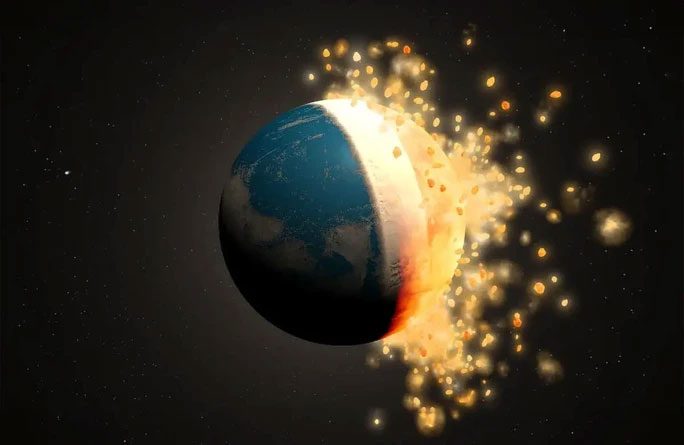The ancient Earth exhibited “monster behaviors,” accompanied by a peculiar trap in its mantle, that led to the rich chemical surface we see today.
A research team from Yale University and the Southwest Research Institute (SwRI) reported that they had “struck gold” while investigating the story of the origin of gold, according to SciTech Daily.
This scenario presents a brutal yet fascinating tale of how a planet forms.

Gold arrived on Earth through space objects. The Earth swallowed them and distributed gold in unexpected ways. (Image: SCITECH DAILY).
The study, recently published in the journal Proceedings of the National Academy of Sciences, states that ancient impacts were responsible for bringing gold and platinum to Earth.
When Earth collided and engulfed “unlucky moons,” similar to the celestial body we now call the Moon, it caused layers of material to fold, leaving gold and platinum mixed in the “body” after the impact.
However, it is quite illogical that we mine gold, platinum, and other metals near the surface.
These elements are classified as having a strong affinity for iron, so during the evolutionary process, they should have been drawn into Earth’s metallic core. They would have quickly sunk from the mantle into the core, merging into it.
The breakthrough theory from the Yale and SwRI team focuses on a thin, temporary region of the mantle, situated between the molten part and the more solid part.
This area possesses unique dynamic properties that can effectively trap falling metal components.
In other words, after “devouring” the unfortunate objects, Earth continued to exhibit “trapping” behavior for the special elements that the victims brought along.
Thanks to these processes, Earth has a crust with extremely rich chemical characteristics. Humanity inadvertently became fortunate by mining precious metals like gold and platinum.
The new theory also asserts that the process of absorbing these “ancient meals” is still ongoing, with geophysical anomalies like the “ultra-low velocity zones”—two peculiar clusters of material as large as continents located at the core-mantle boundary—serving as evidence.


















































